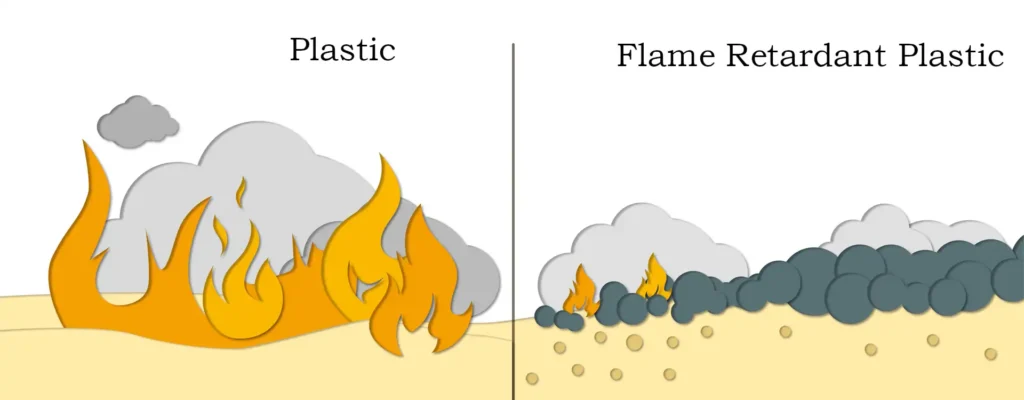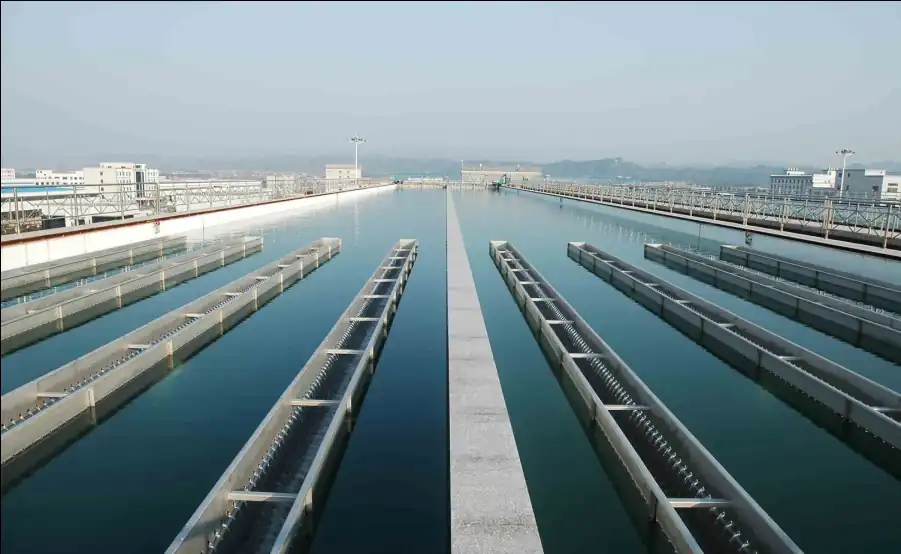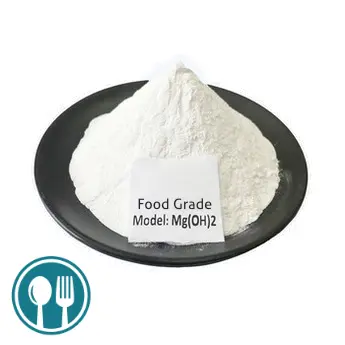The preparation methods of nano magnesium hydroxide mainly include the following:
- Liquid-phase alkaline decomposition method: this method takes hexaammonia magnesium chloride as the precursor, and converts it into high-purity nano magnesium hydroxide by liquid-phase alkaline decomposition method. Specific steps include adding solid particles of hexaammonia magnesium chloride to a dilute alkaline solution with alkalinity stronger than that of ammonia for alkalolysis, adding a dispersant for surface treatment after aging, filtering and washing the obtained suspension until chloride ions are not detectable, and finally drying it to obtain high-purity nano-magnesium hydroxide.
- Hydrothermal method: in this method, magnesium chloride prepared from magnesium oxide/HCl (hydrochloric acid), NH3-H2O (ammonia) and NaOH (sodium hydroxide) were used as raw materials to synthesize nano-flake magnesium hydroxide in the presence of PEG (polyethylene glycol) by hydrothermal method. The resulting product is a nano-flake structure with strong photoluminescence properties, and the smaller the thickness of the flake layer, the stronger the surface polarity, the red-shifted position of the emission peaks, and the weakened intensity of the emission peaks.
- Reverse precipitation method: this method uses magnesium chloride solution as the raw material and sodium hydroxide and ammonia as the mixed precipitant to prepare nanoscale magnesium hydroxide by reverse precipitation and low-temperature ethanol solution to strengthen the nucleation reaction. The experimental results show that under the conditions of the molar ratio of mixed alkali to magnesium chloride is 2.2:1, the total amount of solvent is 2100mL, the volume ratio of water to ethanol is 4:1, and the reaction time is 30min, the nano-magnesium hydroxide rod crystals with high purity, the average particle size of the short diameter of about 8-10 nm and the length of about 40-60 nm can be prepared, and they have regular shapes, uniform particle size distribution, and good dispersion.
- Double-drop addition-reverse precipitation method: this method combines the double-drop addition method and reverse precipitation method to prepare Mg(OH)2 with an average particle size of 60 nm by optimizing the process conditions, using MgCl2 and ammonia as the raw materials. the optimized process conditions include the reaction temperature of 60 ℃, reaction time of 75 min, aging temperature 20 °C, aging time 3 h, ammonia-magnesium molar ratio of 1.7, initial concentration of Mg2+ of 1.7 mol/L, dropwise addition time of MgCl2 of 15 min, grain adjuster PG-006 addition of 0.8% of the mass of the corresponding Mg(OH)2, dropwise addition time of the grain adjuster of 5 min, and rotational speed of 1500 r/min.The nano- magnesium hydroxide with small and uniform particle size and good dispersion.
(1) Flame retardant
Magnesium hydroxide thermal decomposition to produce magnesium oxide and a large amount of water vapor, decomposition will absorb a large amount of heat, the release of water will reduce the temperature of the base material, and magnesium oxide can be used as a good flame retardant. The decomposition equation is as follows:

Using this principle, magnesium hydroxide is often added to polymer materials as a flame retardant. Due to the high thermal stability and decomposition temperature of magnesium hydroxide, as well as non-toxic, smoke suppression and other effects, often applied to engineering thermoset materials. Thermosetting engineering materials are generally processed at 220-250 ℃, adding a certain amount of magnesium hydroxide processing is safer and more reliable. When used as a flame retardant, the amount of ordinary magnesium hydroxide is large, and the filling amount reaches 40% to show a good flame retardant effect, which will affect the mechanical and mechanical processing properties of the base material. Through the surface modification, nano-grade magnesium hydroxide and the material has good compatibility, the physical and chemical properties of the base material has no effect, and play a role in enhancing the effect of complementary toughness.
(2) Preservative and food additives

Nano magnesium hydroxide can be used as a green food preservative. When a layer of magnesium hydroxide emulsion with a mass fraction of 3% is coated on the surface of potatoes for storage, it can effectively prevent the production of plant pathogens. Fish products treated with magnesium hydroxide nanoparticles not only prevent biodegradation of meat tissues, but also maintain their elasticity and softness. At the same time, nano magnesium hydroxide is also very safe and reliable as a food additive.
(3) Acid-base neutralizer and flue gas desulfurization agent

Magnesium hydroxide is a kind of weak alkali with unique buffering ability compared with other alkalis. When it is used as a neutralizer, even if it is in excess, the pH value of the solution will not exceed 9, and at the same time, its neutralization ability is strong, with the same concentration and volume of alkali compared to the efficiency is 30% higher. As a flue gas desulfurization agent, it has the characteristics of simple use process, easy to control and by-products can be recycled.
(4) Heavy metal remover
Nano-magnesium hydroxide particles have large specific surface area and high activity, so they have strong adsorption capacity, and can adsorb and remove Ni2+, Cd2+, Cr3+ and other heavy metal ions that cause harm to the environment from different industrial waste liquids. Sometimes nano magnesium hydroxide can also be used with lime and bentonite.

In addition, nano magnesium hydroxide can be used as a component of new mud materials in oil fields, and can also be applied in medical cosmetics, cigarette paper smoke inhibition coating, and magnetic material processing.

